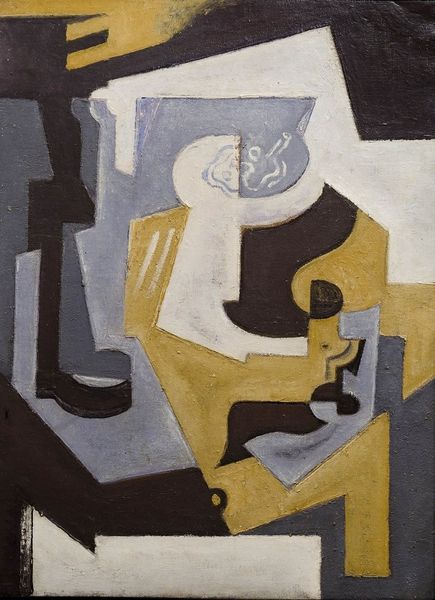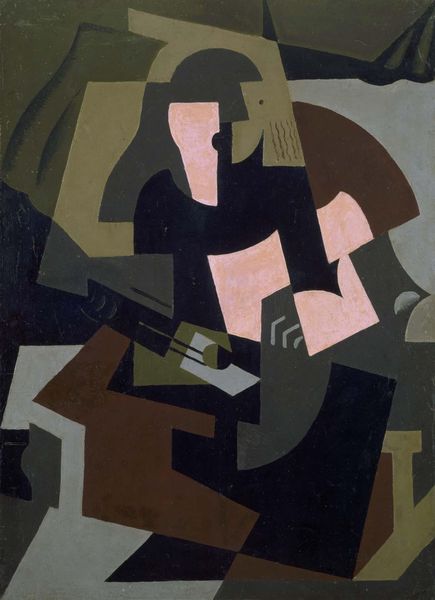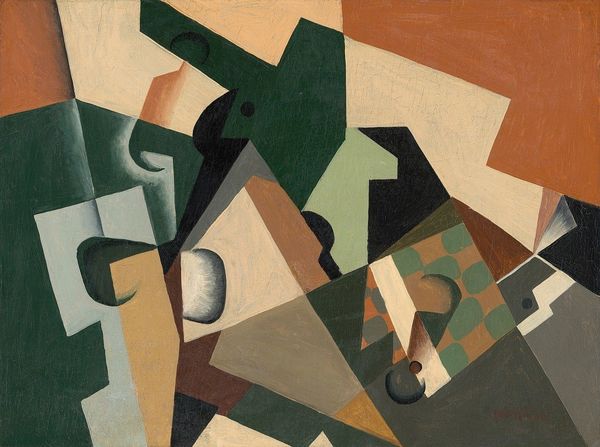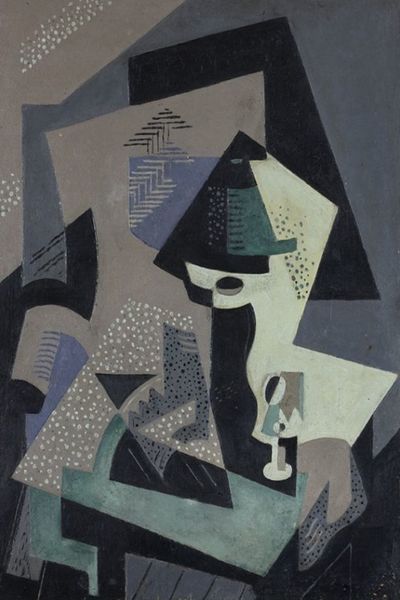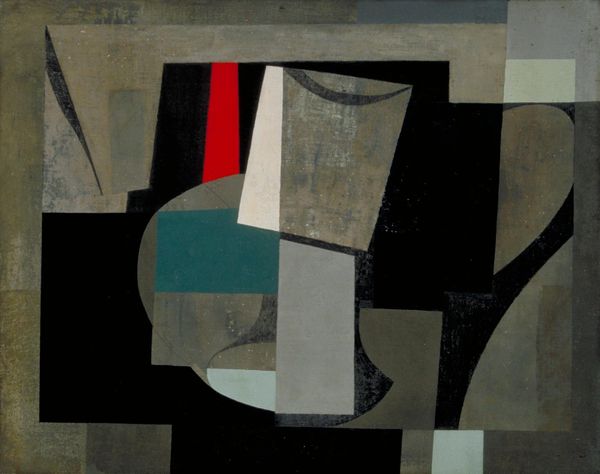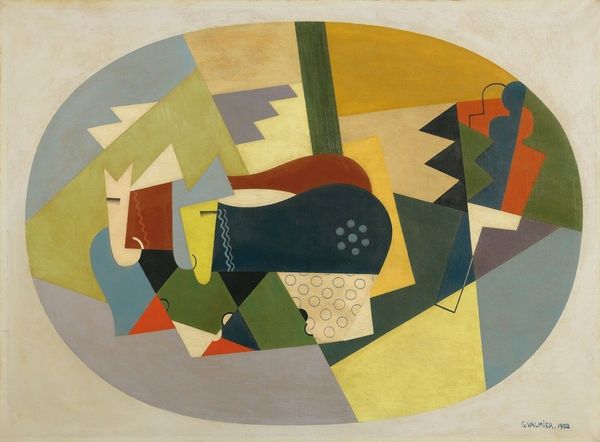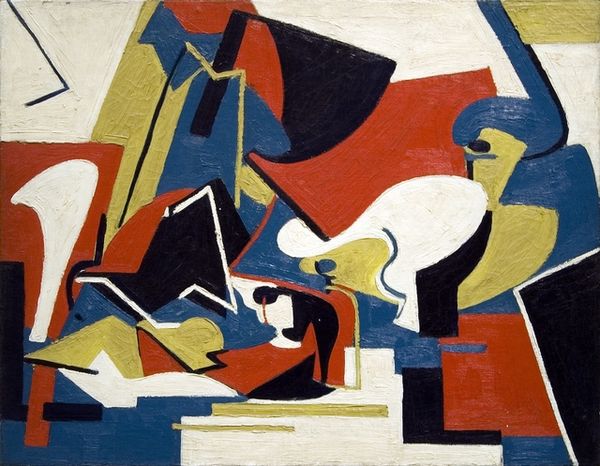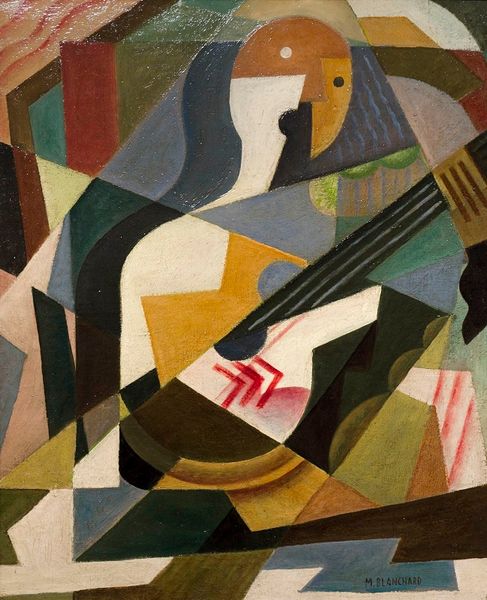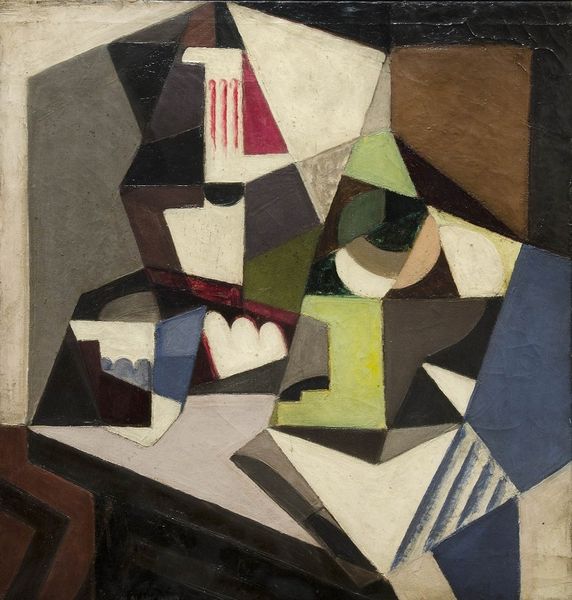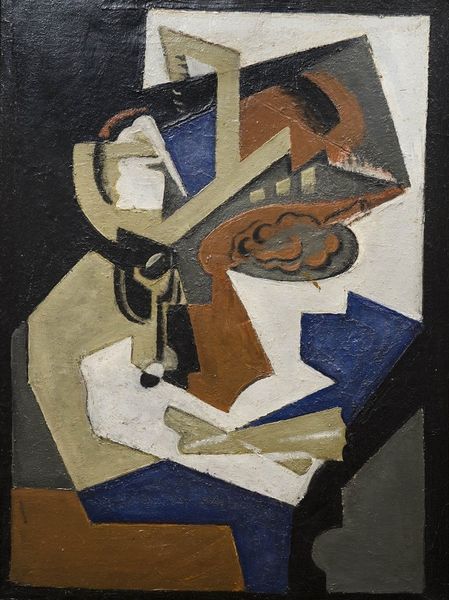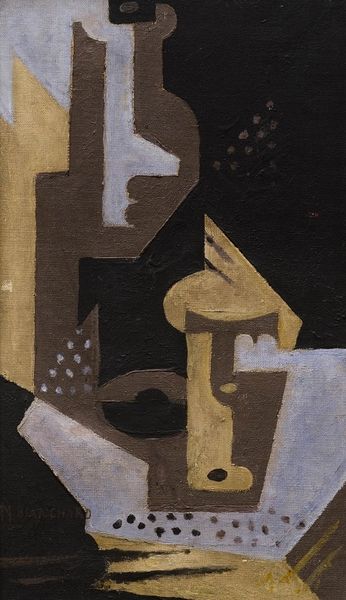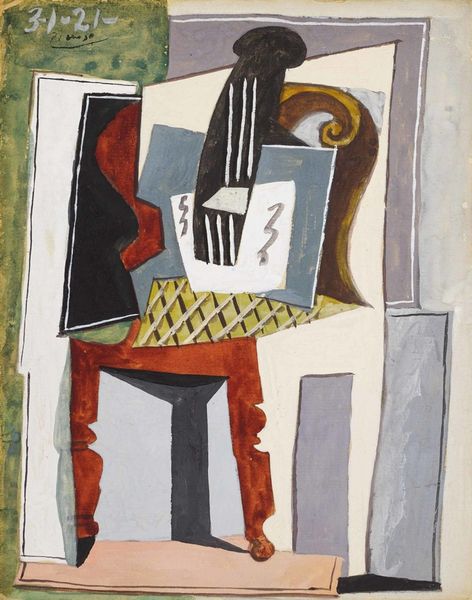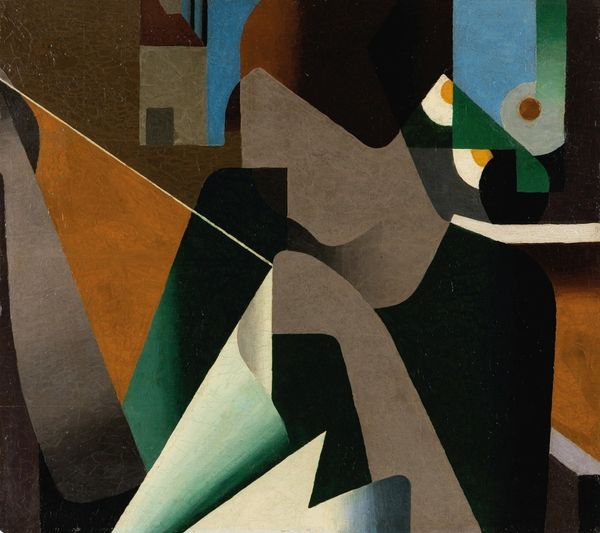
painting, oil-paint
#
portrait
#
cubism
#
painting
#
oil-paint
#
abstraction
#
modernism
Copyright: Public domain
Curator: Here we have María Blanchard's "Composición Con Personaje," created around 1917. An oil painting reflecting the influence of Cubism and Modernism in her work. Editor: Right. First thought? A puzzle, or maybe a dream slightly out of focus. Lots of angular shapes hinting at figures and objects, but not quite revealing them. Moody, with a definite lean towards the enigmatic. Curator: Indeed. Blanchard, as a key figure within the Parisian Cubist movement, actively engaged with its principles, exploring the fragmentation of form and the interplay of perspectives as a mode for re-evaluating the politics of portraiture. Editor: It does have that sense of someone being pulled apart and put back together... almost. I like the muted tones; they give it a subdued feeling. Not as jarring as some Cubist works can be. There’s even, dare I say, a touch of melancholy hanging in the air. Curator: Melancholy is a compelling description. Considering the social context, during and after World War I, many artists used abstraction to respond to a sense of cultural fragmentation and loss. Blanchard was certainly no exception and we see many similar motifs arising at this time. Editor: Interesting! And, maybe that is why it speaks to me. There is that almost visceral understanding. That tug of feeling misplaced but seeing through the haze nonetheless. I feel an undeniable closeness with this composition, the longer I stand here. Curator: Your personal engagement adds another layer. This is especially valuable in our interpretations. Blanchard, also, faced social marginalization due to her physical disability. These circumstances undoubtedly impacted her worldview, contributing to the complexity within her compositions. Editor: So, it is like she built her own world, then invited us to piece it together? She presents fragments, sure, but the challenge is to sense, more than to understand. Curator: Precisely! Ultimately, this allows Blanchard's work to defy singular definitions or interpretations and actively resists them. Instead, her work thrives upon the continued discussion. Editor: Right. I can now definitely take with me the idea of this being not just an artwork, but almost a personal, human manifesto. And with that, I will carry on into the rest of the exhibition, definitely more inspired now, than when I walked in. Curator: An astute observation, and I wholeheartedly agree! On we go!
Comments
No comments
Be the first to comment and join the conversation on the ultimate creative platform.
